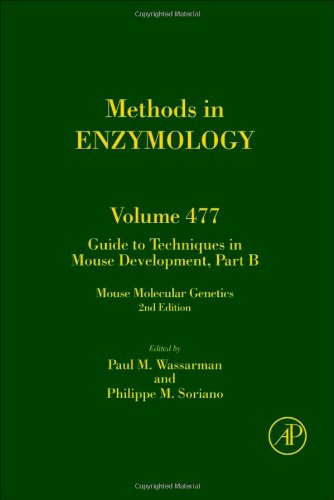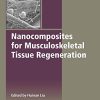Guide to Techniques in Mouse Development Part B Mouse Molecular Genetics 2nd Edition by Paul Wassarman, Philippe M Soriano ISBN 0123848806 9780123848802
$50.00 Original price was: $50.00.$35.00Current price is: $35.00.
Guide to Techniques in Mouse Development, Part B: Mouse Molecular Genetics 2nd Edition by Paul Wassarman, Philippe M Soriano – Ebook PDF Instant Download/Delivery: 0123848806, 9780123848802
Full download Guide to Techniques in Mouse Development, Part B: Mouse Molecular Genetics 2nd Edition after payment

Product details:
ISBN 10: 0123848806
ISBN 13: 9780123848802
Author: Paul Wassarman, Philippe M Soriano
This volume comprehensively covers new technologies and methodologies that have appeared for the study of mouse development.
This volume is Part B of an update of volume 225, Guide to Techniques in Mouse Development, edited by P.M. Wassarman and M.L. DePamphilis and published in 1993.
Comprehensively covers new techniques for the cryopreservation of gametes and embryos, production of transgenic and null (knockout) animals (use of ES cells), generation of conditional/inducible mutant animals, use of gene-trap mutagenesis, analysis of allele-specific expression, use of new reporter constructs, humanizing of transgenic animals, transcript profiling of mouse development, imaging of mouse development, and rederivation of animals and use of mouse genomics.
Guide to Techniques in Mouse Development, Part B: Mouse Molecular Genetics 2nd Table of contents:
Section 1: Transgenesis
Chapter 1: Lentivirus Transgenesis
1. Introduction
2. Generation of Lentiviral Vectors
3. Generation of Transgenic Animals with Lentiviral Vectors
4. Characterization of Transgenic Animals
5. Summary
Acknowledgments
References
Chapter 2: Germline Modification Using Mouse Spermatogonial Stem Cells
1. Introduction
2. Establishing and Maintaining a GS Cell Culture
3. Gene Transduction and Genetic Selection of GS Cells
4. Spermatogonial Transplantation and Offspring Production
References
Chapter 3: Embryonic In Vivo Electroporation in the Mouse
1. Introduction
2. Materials
3. In Utero Electroporation
4. Exo Utero Electroporation
5. Analysis of Electroporated Mice
Acknowledgments
References
Section 2: Transposons
Chapter 4: Current Applications of Transposons in Mouse Genetics
1. Introduction
2. Molecular Characteristics of TEs with Activity in Mice
3. Applications of TEs in Mouse Genetics
4. The Future of TEs in Mouse Genetics
References
Chapter 5: Functional Genomics in the Mouse using the Sleeping Beauty Transposon System
1. Introduction
2. Genome-Wide Germline Mutagenesis with the SB Transgenic Approach
3. Region-Specific Chromosome Engineering with the SB Knock-in Approach
4. Concluding Remarks
Acknowledgments
References
Chapter 6: The Use of DNA Transposons for Cancer Gene Discovery in Mice
1. Introduction
2. Choice of Transposon
3. Transposon Design for Cancer Screens
4. Whole-Body (Constitutive) Screens
5. Tissue-Specific Mutagenesis
6. Inducible Transposase Expression
7. Mapping of Transposon Integration Sites
8. Statistical Mining of Recurrent Integration Sites
9. Validation of Putative Cancer Genes
10. Idiosyncrasies of Transposons as Cancer Gene Discovery Tools
11. Concluding Remarks
References
Section 3: Recombinases
Chapter 7: A Practical Summary of Site-Specific Recombination, Conditional Mutagenesis, and Tamoxife
1. Introduction
2. Recombinase Target Sites
3. Applications
4. Allele Design
5. Recombinase Properties
6. Tamoxifen Administration in Mice and Cultured Cells
7. Problems
8. Concluding Remarks
Acknowledgments
References
Chapter 8: A Recombineering Pipeline to Make Conditional Targeting Constructs
1. Introduction
2. Recombineering
3. Methods
4. Standard Recombineering Electroporation Protocol
5. Concluding Remarks
Acknowledgments
References
Chapter 9: Confirmation of Recombination Site Functionality in Gene Targeting Vectors using Recombin
1. Introduction
2. Materials
3. Method
4. Example of Results
5. Summary
Acknowledgments
References
Chapter 10: Genetic Fate Mapping Using Site-Specific Recombinases
1. Principles Behind Genetic Fate Mapping
2. Genetic Fate Mapping Technique
3. Future Applications: Combining Genetic Fate Mapping with Mutant Analysis
References
Chapter 11: Mapping Cell Fate and Function Using Recombinase-Based Intersectional Strategies
1. Introduction
2. Accessing Mouse Embryonic Cells In Utero for Tracer Molecule “Delivery´´ Using Transgenesis an
3. Improving Cell-Subtype Selectivity in Genetic Fate Maps Using a Dual-Recombinase Intersectional M
4. Transgenes Enabling Subtractive as well as Intersectional Genetic Fate Mapping
5. Exploiting Different Reporter Molecules to Reveal Different Features of Mapped Cell Populations
6. 3 for 1
7. Intersectional Transgene Activation Reaches from Mapping Cell Fate to Mapping Cell Function
8. Methods and Materials
9. Concluding Remarks
Acknowledgments
References
Section 4: Mutagenesis
Chapter 12: Genome-Wide Forward Genetic Screens in Mouse ES Cells
1. Introduction
2. Strategies for Genome-Wide Mutagenesis
3. Using Blm-Deficient ES Cells to Conduct Recessive Genetic Screens
4. Mutant Validation
5. Concluding Remarks
Appendix
Acknowledgments
References
Chapter 13: Gene Trap Mutagenesis in the Mouse
1. Introduction
2. Gene Trapping Strategies
3. Design of the Gene Trap Vector
4. Gene Trapping Protocol for Retroviral Vectors
5. Gene Trapping Protocol for Transposon Vectors
6. Identification of Trap Insertion Sites by Splinkerette PCR
7. Ordering and Handling of Gene Trap Clones from Consortia
8. Outlook
Acknowledgments
References
Chapter 14: A Wider Context for Gene Trap Mutagenesis
1. Introduction
2. Gene Trap Vectors
3. Random Integration as a Means to Generate New Mutations
4. Targeted Trapping
5. Public Resources of Mutagenized ES Cell Clones
6. Gene Discovery and Annotation
7. Hypothesis-Driven Screens
8. Protocols
Acknowledgments
References
Chapter 15: Mouse Mutagenesis with the Chemical Supermutagen ENU
1. Introduction
2. Materials and Methods
3. Conclusion
Acknowledgments
References
Chapter 16: Phenotype-Driven Mouse ENU Mutagenesis Screens
1. Introduction
2. Screen Design
3. Screen Execution
4. Gene Identification
5. The Future for Mouse Forward Genetics
References
Chapter 17: Using ENU Mutagenesis for Phenotype-Driven Analysis of the Mouse
1. Introduction
2. ENU Screen Design
3. ENU Treatment
4. Mutant Ascertainment
5. Mutation Identification
6. Mutation Validation
7. Summary
References
Section 5: Gene Knockdowns
Chapter 18: Exploration of Self-Renewal and Pluripotency in ES Cells Using RNAi
1. Introduction
2. Maintenance of Mouse Embryonic Stem Cells
3. siRNA-Mediated Gene Knockdown
4. Lentivirus-Based shRNA Knockdown System
5. Concluding Remarks
References
Chapter 19: Transgenic RNAi Applications in the Mouse
1. Introduction
2. Short Interfering RNAs
3. Short Hairpin RNA Expression Vectors
4. Transgenic shRNA Expression In Vivo
5. Conditional RNAi
6. Experimental Protocols
References
Chapter 20: Gene Knockdown in the Mouse Through RNAi
1. Introduction
2. Principle of the Approach
3. Materials
4. Methods
5. Concluding Remarks
Acknowledgments
References
Chapter 21: In Vivo Analysis of Gene Knockdown in Tetracycline-Inducible shRNA Mice
1. Introduction
2. Methods
3. Notes
References
Chapter 22: The Power of Reversibility: Regulating Gene Activities via Tetracycline-Controlled Trans
1. Introduction
2. The Tet Regulatory Systems
3. Tet-Transgenic Mice Available from Repositories
4. Tet-Controlled Transgenes to Study Learning and Memory
5. Tet-Transgenic Animals in Cancer Research
6. Secondary iPSC Technology
7. Transgenic Rats
8. Future Perspectives
References
Section 6: Gene Expression profiling
Chapter 23: Gene Expression Profiling of Mouse Oocytes and Preimplantation Embryos
1. Introduction
2. Experimental Design Considerations
3. RNA Isolation and cRNA Target Preparation Protocol (Based on the Affymetrix Protocol for Eukaryot
4. Quality Control Assessment of cRNA
5. Methods for Microarray Data Analysis
6. Validation Methods
7. Archiving Results
8. Future Directions
Acknowledgments
References
Chapter 24: Interrogating the Transcriptome of Oocytes and Preimplantation Embryos
1. Introduction
2. RNA Relative Quantification in Oocytes and Preimplantation Embryos
3. Comparative Analysis of Large-Scale Expression Analyses
4. Taking Isoform-Specific Changes into Account
5. Concluding Remarks
Acknowledgments
Appendix Quantitative Evaluation of Transcript Abundance Using Real-Time PCR
References
Chapter 25: Gene Expression Profiling of Mouse Embryos with Microarrays
1. Introduction
2. Considerations for Methods of Gene Expression Profiling
3. Experimental Strategies
4. Expression Profiling of Small Amounts of RNAs
5. QC of Microarray Results
6. Analysis and Interpretation of Microarray Data
7. Submitting the Data to the Public Database
People also search for Guide to Techniques in Mouse Development, Part B: Mouse Molecular Genetics 2nd:
guide to techniques in mouse development
mouse development timeline
mouse development stages
what are the different techniques of using a mouse
mouse techniques
Tags:
Paul Wassarman,Philippe M Soriano,Techniques,Mouse Development,Mouse Molecular Genetics



